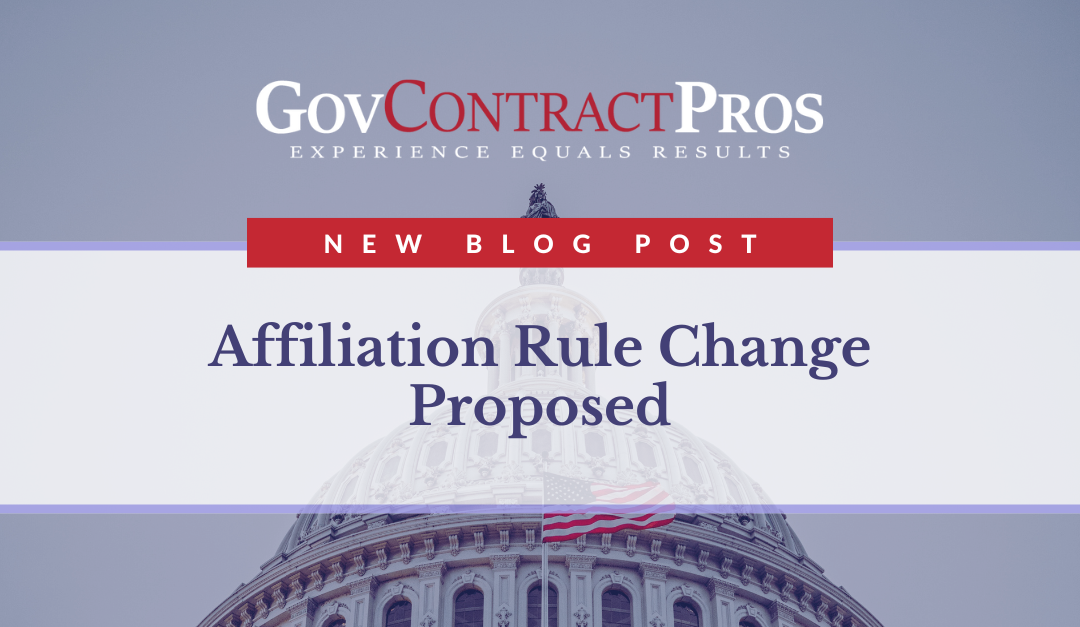GovContractPros has learned that the SBA recently issued proposed changes to the HUBZone Program aimed at clarifying comprehensive changes made to the program in 2019. The proposed rule would also make several changes to SBA’s size and 8(a) Business Development (BD) regulations, as well as some technical changes to the Women-Owned Small Business (WOSB) and Veteran Small Business Certification (SDVOSB) programs. In this post, GCP offers a summary of some of these proposed changes. In our view, the proposed regulations are a mixed bag; some offer some additional flexibility to federal contractors and in other instances, potentially impose significant costs on federal contractors to maintain eligibility for these programs.
Of particular note for HUBZone small businesses, the rule proposes to:
- Require any certified HUBZone small business to be eligible as of the date of offer for any HUBZone contract. This is a departure from the previous standard, wherein HUBZone small businesses relied on their annual certification. In effect, the new requirement would impose an ongoing “attempt to maintain” standard on all HUBZone small businesses. But, the proposed rule also would move away from these annual certifications to triennial certifications, to match the current WOSB and SDVOSB requirements.
- Delete the program specific recertification requirements contained separately in SBA’s size, 8(a) BD, HUBZone, WOSB, and VetCert and move them to a new section that would cover all size and status recertification requirements. This consolidation of obligations is a part of SBA’s stated intention to “simplify” compliance around a single web-based platform and ensure rules are applied uniformly.
- Redefine the term “employee” to include only those individuals who worked a minimum of 80 hours during the four-week period immediately preceding the relevant date of review, doubling the current 40 hour minimum. GCP believes that this could be a significant cost driver for HUBZone companies.
For 8(a) Business Development Participants, the proposed rule seeks to:
- Increase the allowable ownership percentages for non-disadvantaged individuals and business concerns in the same or similar line of business from 10 and 20 percent to 20 and 30 percent. GCP is advising a number of clients regarding equity interests and resulting mergers and acquisitions. We believe that these increased thresholds could foster additional investments in 8(a) small businesses, which would improve their competitiveness in the federal marketplace.
- Promote consistent standards across the 8(a), SDVOSB and WOSB programs. Regulatory differences and OHA precedent have led to unequal interpretations and outcomes for various issues including size and control. This means a business can be certified under one program’s application yet found ineligible under another. The proposed rule seeks to eliminate this confusion by creating uniform exceptions for negative control for “extraordinary circumstances.”
- Amend SBA’s rules to allow all small businesses to seek equity funding without becoming affiliated with the investors solely because of a broad interpretation of the negative-control rule.
SBA specifically requests comments as to whether the six identified exceptions are sufficient or whether one or more additional exceptions should also be included in the regulations. These proposed rules relax affiliation in a manner similar to those currently available to joint ventures regarding negative control matters. GCP believes that adopting these “commercial standards” allows for greater flexibility and conforms government marketplace standards to those of private industry.
- Simplify the ‘‘ostensible subcontractor’’ rule by specifying that an offeror is ineligible as a small business concern, an 8(a) small business concern, a certified HUBZone small business concern, a WOSB/EDWOSB, or a VO/ SDVO small business concern where SBA determines there to be an ostensible subcontractor relationship.An ostensible subcontractor is a subcontractor that is not a similarly situated entity performs primary and vital requirements of a contract, or of an order, or is a subcontractor upon which the prime contractor is unusually reliant. GCP is concerned with this regulation, recognizing that ostensible subcontractor regulations are notoriously ambiguous.
- Simplify and reorganize § 121.404, which addresses the date used to determine size for size certifications and determinations.
Given the breadth, depth, and impact of this proposed rule, GCP anticipates that the SBA can expect significant industry comments before the comment period closes on October 7, 2024.
GCP monitors important regulatory changes and other trends in the federal marketplace and assists federal contractors to navigate the requirements of the various SBA small business programs. If you have questions about the proposed rule or if you would like our support to submit comments, please contact Trevor Skelly.


Recent Comments